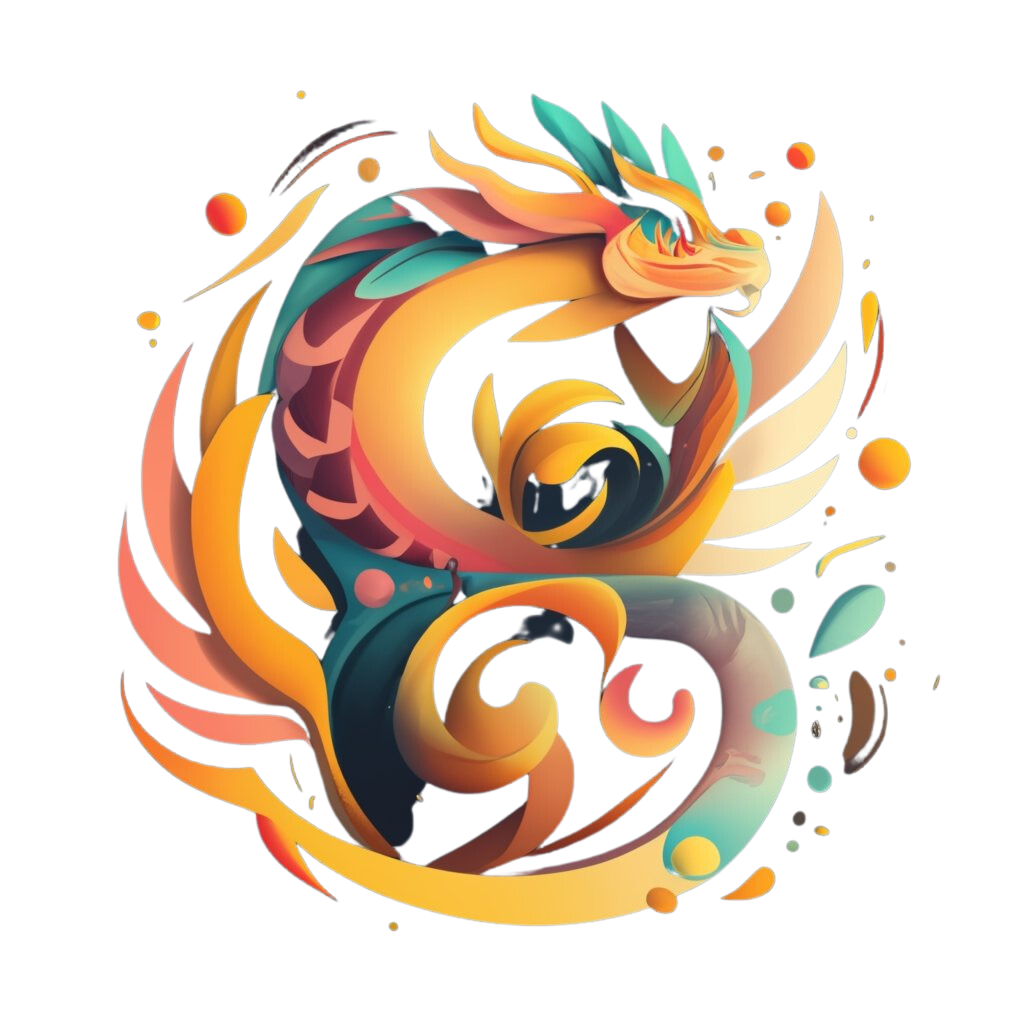Welcome to the captivating world of mythical creatures from around the world! In this article, we will embark on a fascinating journey as we delve into the enchanting realm of legendary creatures and folklore beings. From small and human-like creatures to big and scary monsters, we will discover the diverse and captivating creatures that have captured human imagination for centuries.
Key Takeaways:
-
- Mythical creatures are fantasy creatures and supernatural monsters from folklore, legends, and myths.
-
- They can inhabit various places such as forests, seas, and skies, and most countries have their own versions of these creatures.
-
- Popular mythical creatures include the Aqrabuamelu, Banshee, Basilisk, Bigfoot, Bogeyman, Centaur, Chupacabra, Cyclops, Dragons, Dybbuk, Fairies, Goblins, Golem, Griffin, Kraken, Mermaids, Minotaur, Phoenix, Unicorn, and Wendigo, among others.
-
- These creatures hold symbolic meanings and lessons, representing aspects such as strength, intuition, transformation, protection, and balance.
-
- Encounters with mythical creatures in dreams or thoughts may reflect personal growth, challenges to overcome, spiritual awakening, and the need to embrace one’s true self and creative side.
Mystical Beings of Asia: Gods, Ghosts, and Guardians
Asia, with its ancient civilizations, holds a deep well of mythical creatures and gods that reflect the continent’s rich cultural heritage. From powerful gods to eerie spirits, these figures capture Asian beliefs about life, death, and the supernatural.
Chinese Mythical Creatures: Dragons and Other Asian Folklore Legends
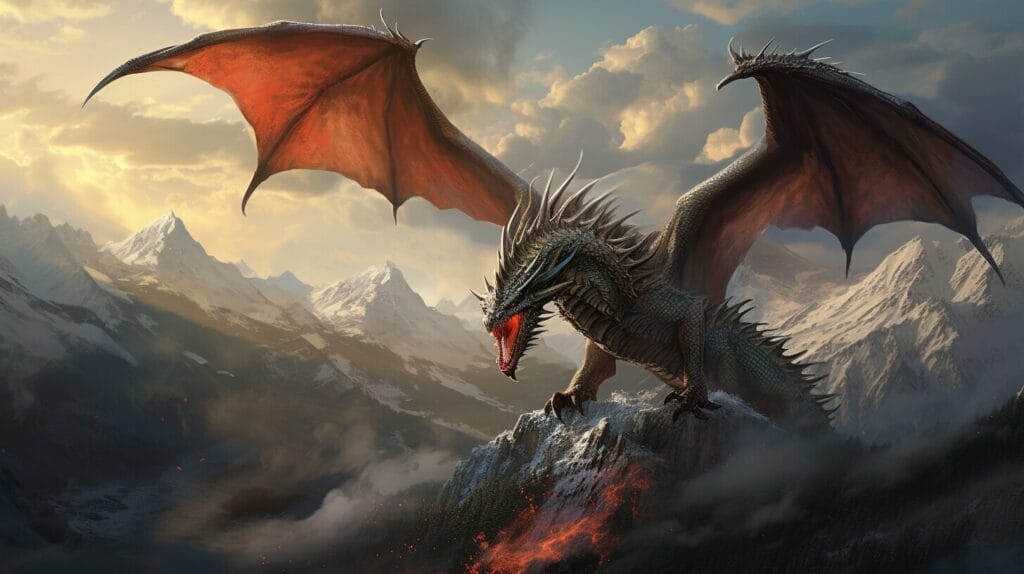
Embark on an extraordinary flight as we uncover the awe-inspiring Dragons of Chinese mythology. These majestic creatures hold a special place in the hearts and imaginations of the Chinese people, symbolizing power, wisdom, and good fortune. Known as “long” in Chinese, dragons are revered and celebrated in various aspects of Chinese culture.
According to ancient Chinese folklore, dragons are said to possess incredible abilities, such as control over weather elements like rain and storms. They are believed to have the ability to fly through the skies and swim in the depths of the sea, making them versatile and adaptable creatures. Chinese dragons are often depicted with serpentine bodies, adorned with vibrant colors and scales, and featuring magnificent horns, wings, and claws.
In Chinese mythology, dragons also hold a significant role in the creation stories. Legends speak of dragons bringing rain and water, believed to be vital for the fertility of the land and the well-being of the people. As a result, dragons have become symbols of prosperity, abundance, and agricultural success.
The presence of dragons extends beyond folklore and mythology. They can be found in various forms of Chinese art, architecture, and literature. From beautifully crafted dragon sculptures adorning palace gates and temples, to intricate dragon motifs on ceramics and silk fabrics, these mythical creatures continue to inspire and captivate generations.
Chinese Dragons: A Symbol of Strength and Cultural Identity
Chinese dragons hold deep cultural significance, representing more than just mythical creatures. They are seen as symbols of strength, auspiciousness, and the Chinese cultural identity. The reverence for dragons is evident during traditional festivities such as the Chinese New Year, where dragon dances and performances are popular and believed to bring good luck for the year ahead.
The symbolism of dragons in Chinese culture also extends to personal qualities. Just as dragons are known for their power and wisdom, individuals who are born in the Year of the Dragon, according to the Chinese zodiac, are believed to possess these same characteristics. They are often seen as natural leaders, with a strong sense of purpose and a drive to succeed.
As we explore the rich tapestry of mythical creatures around the world, the Chinese dragon stands tall as a creature of beauty, strength, and cultural significance. From their striking depictions in art and folklore to their representation of prosperity and wisdom, dragons continue to inspire awe and wonder in the hearts of all who encounter them.
| Dragon Symbolism | Meaning |
| Power | Dragons are associated with strength and authority. |
| Wisdom | Dragons are believed to possess ancient wisdom and knowledge. |
| Good Fortune | Dragons are seen as bringers of luck and abundance. |
| Protection | Dragons are believed to protect against evil spirits and negative energies. |
| Transcendence | Dragons are associated with spiritual transformation and enlightenment. |
Unveiling Mesopotamia’s Aqrabuamelu: A Legendary Creature
Journey into the ancient land of Mesopotamia and discover the legendary Aqrabuamelu. This fascinating creature, often depicted as a winged scorpion with a human head, has captivated the imagination of civilizations dating back to ancient times. Its unique appearance and mythical qualities have made it a prominent figure in Mesopotamian art, literature, and folklore.
The Aqrabuamelu is believed to have served as a guardian and protector, defending sacred places and individuals from evil forces. Its dual nature, with the combination of both scorpion and human attributes, symbolizes the balance between the divine and the earthly realms. In Mesopotamian mythology, it is said to have been created by the god Enki to safeguard his temple and keep away those with impure intentions.
Encounters with the Aqrabuamelu were believed to bring both blessings and warnings. Its presence was seen as a sign of divine protection and a marker of sacred spaces. Legend has it that those who encountered this mythical creature were granted knowledge and protection, but they were also reminded of the consequences of crossing boundaries and straying from the path of righteousness.
As we continue our journey through the world of mythical creatures, the Aqrabuamelu provides a glimpse into the rich tapestry of Mesopotamian culture and belief systems. Its existence serves as a reminder of the power of mythology to shape and reflect human aspirations, fears, and understanding of the supernatural.
Enchanted Europe: Gods, Monsters, and Mysterious Beings
European mythology presents a fascinating array of gods, spirits, and creatures influenced by the continent’s diverse landscapes and histories. From noble gods to ghostly beings, Europe’s myths are endlessly intriguing.
The Basilisk: A Dreaded Creature from European Folklore
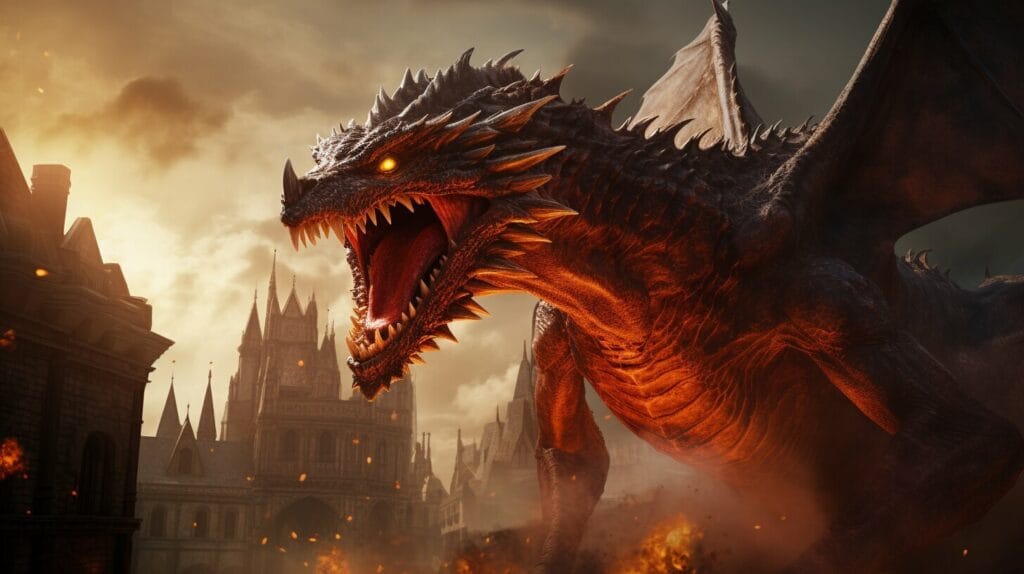
Brace yourself as we come face to face with the dreaded Basilisk from European folklore. This legendary creature, often depicted as a serpent or a dragon with a deadly gaze, has been a source of fear and fascination for centuries. According to ancient tales, the Basilisk possesses the power to kill with a single glance, turning its victims to stone. Its mere presence instills terror in the hearts of those who encounter it.
Legends tell of courageous knights and brave adventurers who risked their lives to confront the Basilisk, driven by the desire to rid their lands of this monstrous creature. These stories depict epic battles between the hero and the beast, emphasizing the importance of bravery and the triumph of good over evil.
In European folklore, the Basilisk is often associated with dark, foreboding places such as deep forests or hidden caves. Its existence serves as a cautionary tale, warning against the dangers that lurk in the shadows. Tales of the Basilisk also reinforce the theme of the unknown and the need to confront our deepest fears in order to overcome them.
| Appearance | Abilities | Characteristics |
| The Basilisk is commonly depicted as a reptilian creature with a serpent-like body and a crown-shaped crest on its head. | Its most feared ability is its lethal gaze, capable of turning humans and animals to stone. It also possesses venomous fangs and can emit a deadly odor. | The Basilisk is said to be highly territorial and fiercely protective of its lair. It is often portrayed as a symbol of evil and represents the struggle between good and evil. |
“The Basilisk’s gaze can strike fear into the hearts of even the bravest warriors. Its very presence is a reminder of the darkness that lurks in the world.”
Despite its terrifying reputation, the Basilisk continues to captivate our imagination. It serves as a reminder of the power of mythology and the enduring impact of these legendary creatures on our culture and storytelling. The Basilisk, like many other mythical creatures, holds a significant place in our collective consciousness, representing our fears and the challenges we must face in order to triumph over adversity.
The Basilisk’s presence in European folklore has sparked both fear and intrigue. Its ability to turn victims to stone and its formidable appearance have made it a symbol of terror. However, the Basilisk’s story also serves as a reminder of the power of bravery and the triumph of good over evil. It challenges us to confront our fears and overcome the darkness that can exist within ourselves and our world.
The Banshee: Ireland’s Eerie Entity
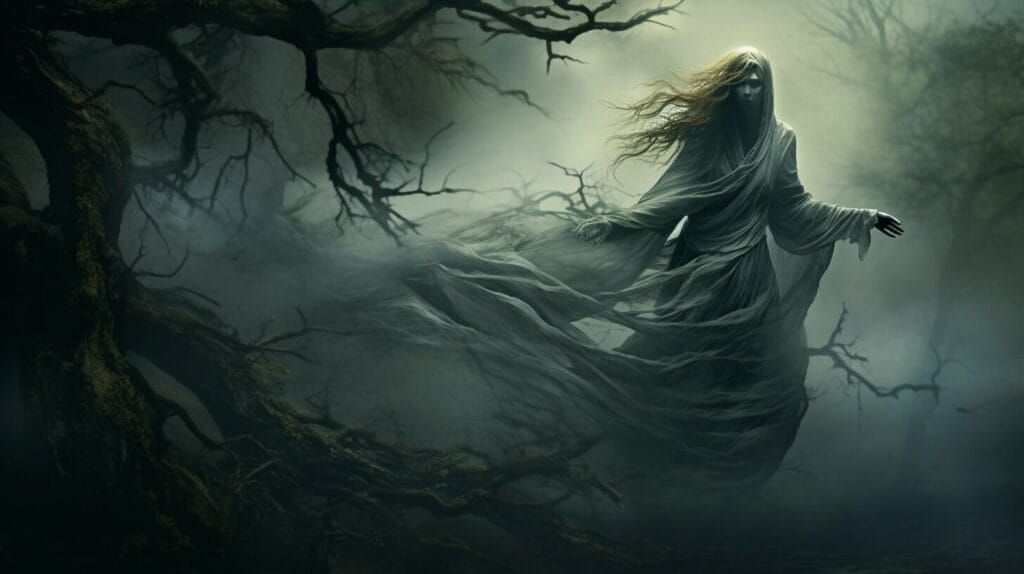
Hear the spine-chilling wails of the Banshee as we explore this eerie entity from Ireland. In Irish folklore, the Banshee is a powerful and enigmatic creature associated with death and the spirit world. Often depicted as a female figure with long, flowing hair, dressed in a tattered grey or white gown, the Banshee is said to appear before impending death, foretelling the demise of a loved one.
The name “Banshee” translates to “woman of the fairy mound,” indicating her connection to the supernatural realm. Legend has it that her mournful cries can be heard piercing through the night, echoing through the valleys and signaling the imminent passing of someone in the nearby community.
The Banshee’s wailing voice is often described as a chilling mix of sorrow and warning, instilling both fear and a sense of foreboding in those who hear it. Her haunting presence has captivated the imaginations of generations, making her one of the most enduring and iconic folklore creatures in Irish mythology.
The tales surrounding the Banshee vary across different regions of Ireland, but they all share a common theme of her connection to death. In some stories, the Banshee is believed to be the ghost of a woman who died a tragic or violent death, destined to wander the earth and mourn for eternity. Others believe she is a supernatural being, tasked with the solemn duty of warning families of an impending loss.
“Her voice is heard in the night, like the death-raven’s croak, for her cry is the cry of blood. She utters a long, sorrowful wail, in which there is something of the wild music of the ocean wind, or the swell of a melancholy tune, as it dies away on the keys of an Æolian harp.” – W.B. Yeats
In some areas, it is said that the Banshee appears as an old hag, while in others she takes the form of a beautiful young woman. Regardless of her appearance, her presence always heralds a tragic event. Those who hear her mournful cry are urged to take heed, as it serves as a warning to prepare for the loss of a loved one.
The Banshee’s Legacy
The Banshee’s role in Irish folklore reflects the deep connection between the living and the spiritual world. She represents both the pain of loss and the importance of embracing the inevitable cycles of life and death. The eerie entity serves as a reminder to cherish our loved ones and to honor the memory of those who have passed.
| Key Facts | Description |
| Origin | Irish folklore |
| Appearance | Female figure, long hair, tattered gown |
| Role | Foretelling death, warning of impending loss |
| Legend | Ghost of a woman or supernatural being |
| Legacy | Symbolizes the cycle of life and death, reminds us to cherish loved ones |
The Bogeyman: England’s Child-Scaring Figure
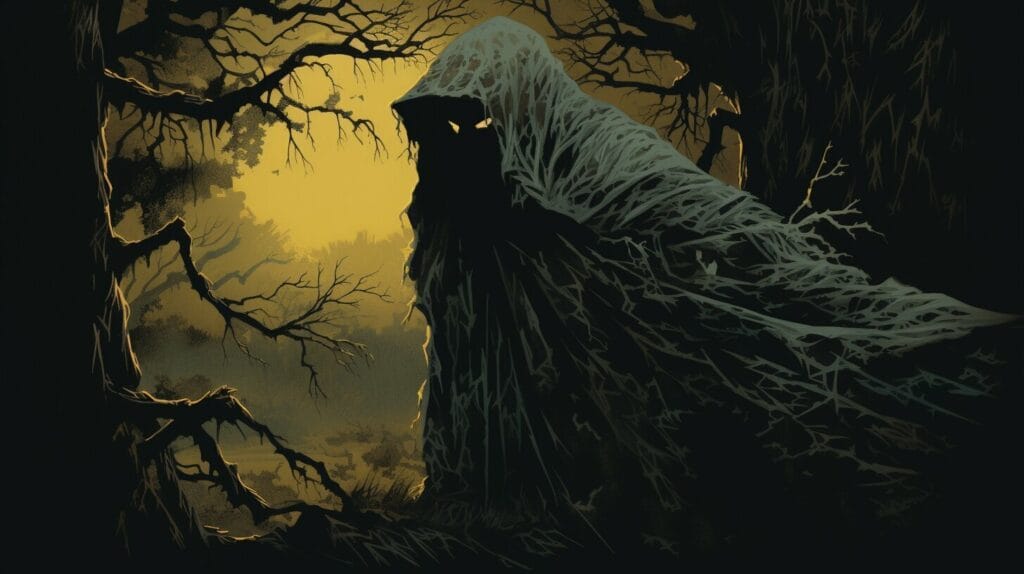
Enter the realm of childhood fears as we delve into the enigmatic figure of the Bogeyman from England. This folklore creature lurks in the shadows, ready to haunt the imaginations of young minds. Known by various names across different cultures, the Bogeyman represents the embodiment of anxiety, the unknown, and the consequences of misbehavior.
According to legend, the Bogeyman is said to snatch away disobedient children who dare to stay up past their bedtime or misbehave. This cautionary tale serves as a reminder to children to follow rules and behave properly. The Bogeyman’s presence evokes fear and serves as a disciplinary tool for parents, encouraging obedience and good behavior.
“Beware, for the Bogeyman may come for you if you don’t finish your vegetables,” parents would whisper, instilling a sense of dread in their children.
Similar to other folklore creatures, the Bogeyman takes on different forms depending on the cultural interpretation. In England, the Bogeyman is often depicted as a shadowy figure lurking under the bed or hiding in the closet. Its appearance is intentionally vague, allowing children’s imaginations to conjure up their own unique and terrifying versions of this feared entity.
The Bogeyman’s influence extends beyond folklore and into popular culture, where it continues to inspire books, movies, and other forms of entertainment. It has become a well-known symbol of childhood fears and serves as a reminder of the power of imagination.
In conclusion, the Bogeyman from England is a legendary creature deeply rooted in the fears and imaginations of children. Its mysterious presence plays an important role in instilling discipline and good behavior. Through centuries of folklore, the Bogeyman has retained its ability to captivate and terrify young minds, leaving an indelible mark on childhood tales and bedtime stories.
Centaur: Ancient Greece’s Legendary Hybrid
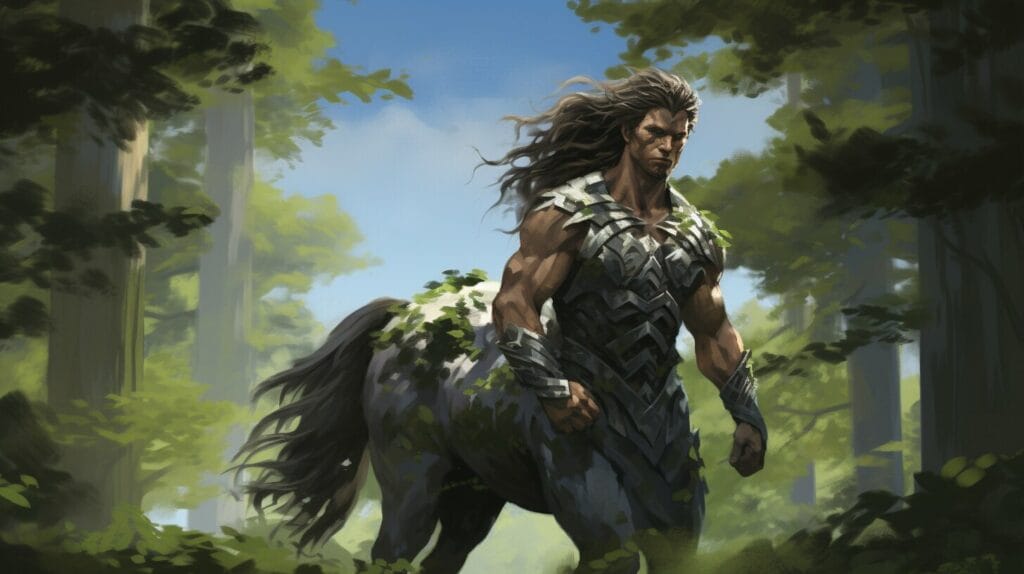
Travel back in time to ancient Greece and encounter the majestic Centaur, a legendary hybrid creature. In Greek mythology, Centaurs were depicted as half-human and half-horse beings, embodying both power and wisdom. These fascinating creatures played a prominent role in various myths and stories, leaving an indelible mark on Greek folklore.
The Centaur was often portrayed as a wise and knowledgeable entity, symbolizing the harmony between man and nature. With the upper body of a human and the lower body of a horse, these mythical beings possessed great strength and agility, making them formidable warriors.
According to Greek mythology, Centaurs were known for their wild and unpredictable behavior. They were often associated with revelry and excess, frequently depicted as heavy drinkers and indulgers in earthly pleasures. However, not all Centaurs adhered to these characteristics. Some, like Chiron, were renowned for their wisdom and teachings, serving as mentors to famous heroes such as Achilles and Hercules.
The Symbol of the Centaur
The Centaur holds symbolic significance in Greek mythology. These creatures represent the delicate balance between human rationality and the untamed instincts of the animal kingdom. They serve as a reminder of the duality that resides within each individual, as well as the eternal struggle to find harmony between opposing forces.
| Key Characteristics | Symbolism |
| Half-human, half-horse | Unity of human intellect and animal instincts |
| Knowledge and wisdom | Guidance and mentorship |
| Strength and agility | Power and resilience |
Encountering the Centaur in Greek mythology serves as an invitation to explore our own dual nature. It reminds us to embrace both our rational minds and our primal instincts, finding balance and harmony within ourselves.
Cyclops: The One-Eyed Giant of Greek Mythology
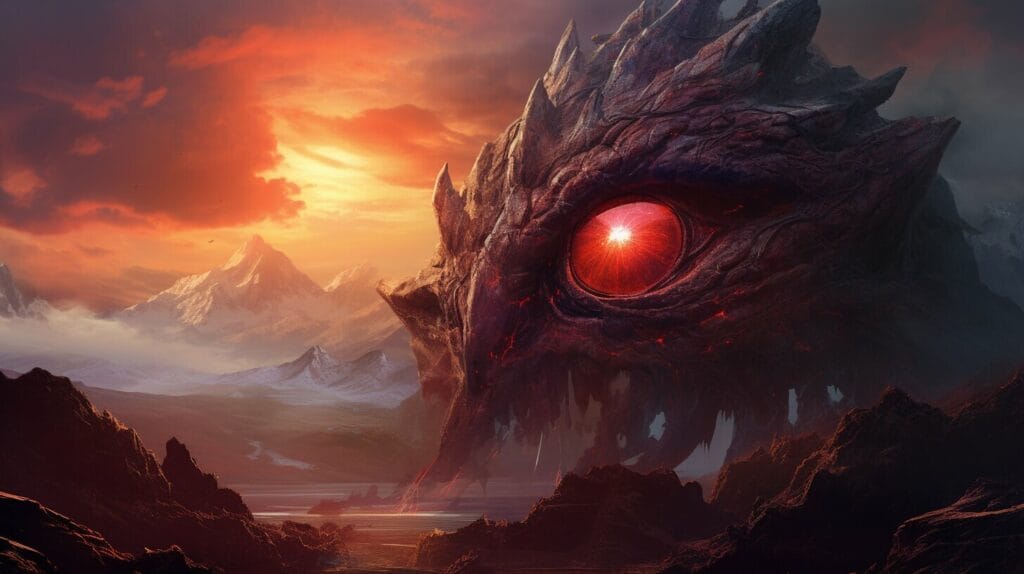
Venture into a world of epic myths and encounter the awe-inspiring Cyclops from Greek mythology. Known for its fearsome appearance and formidable strength, the Cyclops has left an indelible mark in ancient Greek lore.
The Cyclops, with its single eye in the center of its forehead, is often depicted as a towering giant, capable of immense destruction. According to the mythical tales, these powerful creatures inhabited remote caves and rocky landscapes.
Legend has it that the Cyclops were skilled craftsmen, known for forging thunderbolts for the mighty god Zeus. Despite their strength and craftsmanship, the Cyclops were also known for their fierce and aggressive nature, often causing havoc in the mortal world.
Encounters with the Cyclops in ancient Greek mythology serve as cautionary tales and metaphors for the human condition. They represent the duality of power and vulnerability, reminding us that strength alone does not guarantee wisdom or righteousness.
As we delve into the mythical realm of the Cyclops, let us admire the rich storytelling and symbolism that Greek mythology brings. From their tumultuous relationships with the gods to their epic battles against mortal heroes, the Cyclops continue to captivate our imagination and inspire timeless tales of heroism and triumph over adversity.
Table of Cyclops Characteristics
| Name | Description |
| Cyclops | A fearsome one-eyed giant with incredible strength. |
| Appearance | Towering, muscular figures with a single eye in the center of the forehead. |
| Abilities | Skilled craftsmen known for forging thunderbolts. |
| Personality | Fierce, aggressive, and prone to causing chaos. |
| Symbolism | Represents the duality of power and vulnerability. |
The Dybbuk: Eastern Europe’s Troubled Spirit
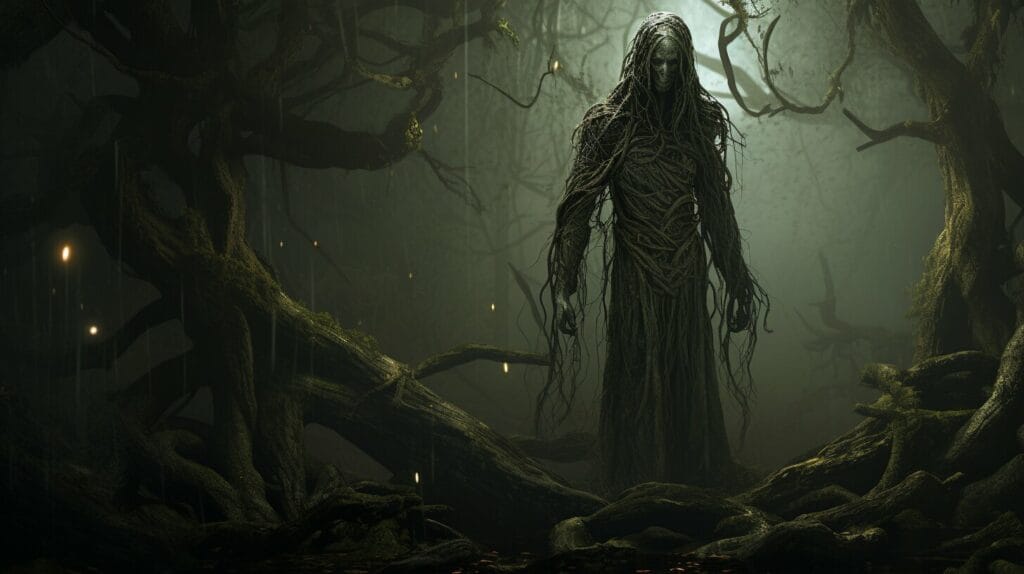
Discover the haunting tale of the Dybbuk, an enigmatic spirit from Eastern European legends. The Dybbuk is believed to be the lingering soul of a deceased person that clings to the world of the living, seeking to fulfill unfinished business or seek redemption. This restless spirit is often portrayed as a malevolent presence, causing havoc and tormenting those it possesses.
In Jewish folklore, the Dybbuk is known for its ability to inhabit the bodies of unsuspecting individuals, taking control and influencing their actions. It is said that the possession begins with unexplained mood swings and erratic behavior, eventually leading to physical manifestations such as convulsions or speaking in an unknown language.
The tale of the Dybbuk serves as a cautionary tale, exploring themes of sin, guilt, and the consequences of unfinished business. It reflects the belief that unresolved issues and unfulfilled desires can have a lasting impact on both the living and the dead. The Dybbuk embodies the struggles of the human condition, reminding us of the importance of facing our demons and finding closure.
Notable Features of the Dybbuk
| Characteristic | Description |
| Malevolent Presence | The Dybbuk is often portrayed as a malevolent spirit, seeking to cause harm and chaos. |
| Possession | It is believed that the Dybbuk possesses living individuals, taking control of their bodies and influencing their actions. |
| Unfinished Business | The Dybbuk is said to be driven by unresolved issues and unfulfilled desires, seeking redemption or closure. |
| Torment and Haunting | Those possessed by the Dybbuk may experience physical manifestations, mood swings, and uncontrollable behavior. |
“The Dybbuk embodies the struggles of the human condition, reminding us of the importance of facing our demons and finding closure.”
The Dybbuk continues to intrigue and fascinate with its mysterious nature and chilling presence. Its legend serves as a reminder of the complexity of the human spirit, and the importance of resolving conflicts and finding peace in both life and death.
Ancient Guardians of Latin America: Spirits, Gods, and Wild Creatures
Latin American mythology is filled with gods and creatures tied closely to nature and cosmic forces, representing the profound spiritual beliefs of its many cultures.
Chupacabra: Puerto Rico’s Cryptid Predator
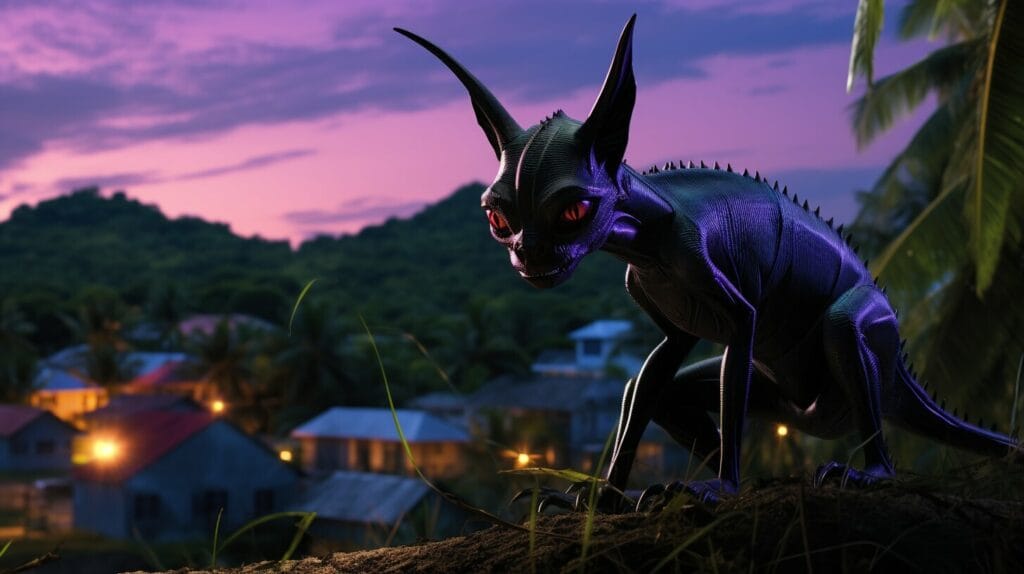
Enter the realm of Puerto Rico’s folklore as we investigate the enigmatic Chupacabra. This legendary beast has sparked numerous tales and captured the curiosity of cryptozoologists and enthusiasts alike. Standing as a cryptid predator, the Chupacabra has left its mark on Puerto Rican folklore and continues to intrigue and fascinate.
The Chupacabra, also known as the “goat-sucker,” is said to inhabit rural areas and prey on livestock, particularly goats and chickens. Sightings and encounters with this mythical creature have been reported throughout Puerto Rico, creating a sense of mystery and fear among the locals. Descriptions of the Chupacabra vary, but common characteristics include a reptilian appearance, large fangs, and glowing red eyes.
In the pursuit of understanding this legendary beast, researchers have conducted investigations and collected evidence, including alleged footprints, photographs, and eyewitness accounts. However, the Chupacabra remains elusive, its existence debated between skeptics and believers.
| Characteristics | Beliefs |
| Vampire-like behavior | The Chupacabra is believed to drain the blood of its prey. |
| Alien connection | Some speculate that the Chupacabra is extraterrestrial in nature. |
| Evolutionary mutation | Others believe it is a result of genetic experimentation gone wrong. |
While the existence of the Chupacabra may remain a subject of debate, its presence in Puerto Rican folklore serves as a testament to the power of myth and storytelling. Just like other legendary beasts around the world, the Chupacabra represents the fears and mysteries that captivate the human imagination. Whether it is a figment of the imagination or a creature yet to be discovered, the Chupacabra continues to be an enduring part of Puerto Rico’s rich cultural heritage.
Untamed Realms of Africa: Spirits, Beasts, and Divine Protectors
African mythology reflects a deep connection to natural forces, with gods and mythical beings who act as guardians, messengers, and protectors.
Learn more about African mythology and folklore here: African Mythical Gods and Creatures
The Legends of North America: Native Spirits and Mysterious Beasts
North American mythology, especially within Native American traditions, features a range of gods and mythical creatures that reveal a profound connection to nature and the spiritual realm.
Bigfoot: North America’s Elusive Enigma
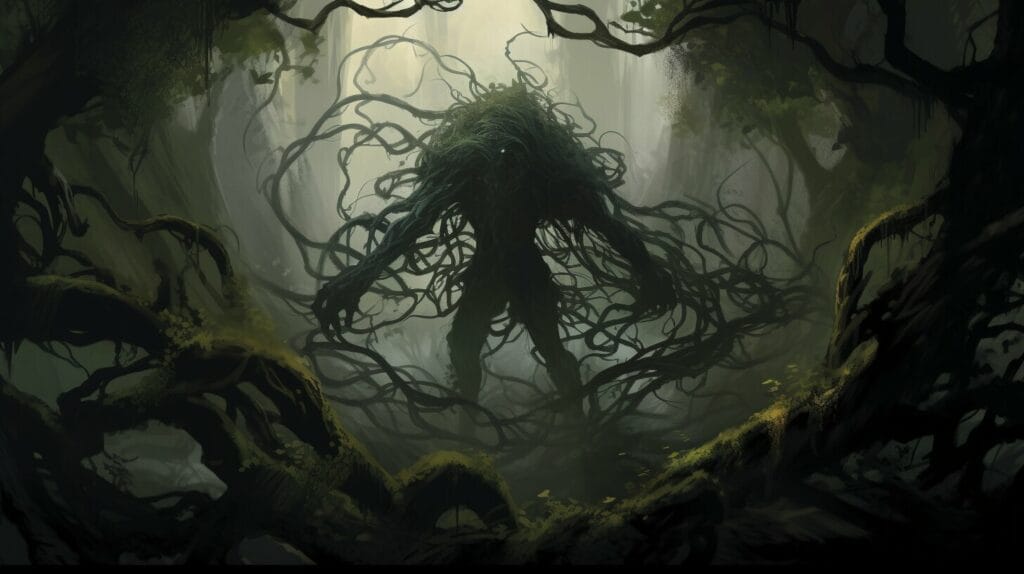
Explore the wilderness of North America as we delve into the legend of Bigfoot. This elusive creature, also known as Sasquatch, has captured the imagination of countless individuals and sparked debates among skeptics and believers alike. With reported sightings spanning decades, the mystery surrounding Bigfoot continues to intrigue adventurers and researchers.
Described as a large, hairy creature standing upright and reaching impressive heights, Bigfoot is believed to inhabit remote forests and mountainous regions across North America. Numerous eyewitness accounts and alleged footprints have fueled speculation about its existence, but concrete evidence has yet to be discovered.
Some argue that Bigfoot is merely a product of folklore and misidentification, while others believe it could be a yet-undiscovered species or an ancient relic from a bygone era. The allure of this mythical monster lies in the possibility of uncovering new insights into the natural world and our understanding of cryptids.
Uncovering the Truth About Bigfoot
Despite numerous expeditions and investigations, the search for concrete proof of Bigfoot’s existence remains ongoing. Researchers employ various methods, including collecting hair samples, analyzing alleged footprints, and setting up trail cameras in potential Bigfoot hotspots.
“The mystery of Bigfoot captivates the imagination and fuels our curiosity about the unknown. It’s an ongoing quest to uncover the truth and shed light on this enigmatic creature.”
While the scientific community remains skeptical, the allure of Bigfoot continues to draw interest from enthusiasts and researchers. The legend of this mythical monster persists as people recount their encounters and share their stories, keeping the curiosity alive and inspiring further investigations.
A Mythical Monster or a Hidden Reality?
Whether Bigfoot is a mythical monster of folklore or a hidden reality waiting to be discovered, the legend persists. Its iconic status in North American folklore and popular culture has solidified its place as one of the most enduring legends. As we continue to explore the mysteries of the natural world, the quest for Bigfoot’s truth continues, capturing the imagination and curiosity of generations to come.
| Fact | Detail |
| Height | Reported to reach heights of 6 to 10 feet tall |
| Weight | Estimated to weigh between 500 to 800 pounds |
| Habitat | Believed to inhabit remote forests and mountainous regions |
| Sightings | Reported sightings span several decades across North America |
Sacred Spirits of Australia: Dreamtime Beings and Ancient Protectors
Australian Aboriginal mythology, known as the Dreamtime, speaks of ancestral spirits and beings who shaped the land and natural features. These creatures represent the unique and timeless bond Aboriginal cultures have with their surroundings.
Fairies, Goblins, and Golems: Folklore Creatures of Various Origins
Immerse yourself in a world of magic and wonder as we encounter Fairies, Goblins, and Golems from diverse folklore traditions. These enchanting creatures have captivated the imaginations of people around the world for centuries, each with their own unique characteristics and origins.
Fairies, known for their ethereal beauty and mischievous nature, are often associated with nature and the spirit realm. From the tiny and delicate flower fairies of English folklore to the powerful and mystical Sidhe of Celtic mythology, fairies have been a source of fascination and inspiration in countless stories and legends.
Goblins, on the other hand, are often depicted as grotesque and misshapen creatures who dwell in dark, hidden places. These cunning and sometimes malevolent beings can be found in various mythologies, from the mischievous and gold-hoarding goblins of European folklore to the mystical and shape-shifting tengu of Japanese mythology.
Lastly, we come across the mighty Golems, beings crafted from inanimate matter and brought to life through magic or divine intervention. These powerful and often loyal creatures appear in Jewish folklore and have been depicted as protectors or servants. The most famous example is the Golem of Prague, a creature made of clay that defended the Jewish community from harm.
As we journey through the realms of Fairies, Goblins, and Golems, we gain a deeper understanding of the rich tapestry of folklore and the universal themes they represent. These mythical creatures not only spark our imagination but also provide valuable lessons and symbolism, reminding us of the importance of harmony with nature, the power of transformation, and the need for balance in our lives.
FAQ
1. What are mythical creatures?
Mythical creatures are fantasy creatures and supernatural monsters from folklore, legends, and myths. They can inhabit various places such as forests, seas, and skies.
2. Where do mythical creatures come from?
Most countries have their own versions of these creatures, ranging from small and human-like to big and scary monsters. These creatures often reflect the culture of their origin.
3. What are some popular mythical creatures?
Some popular mythical creatures include the Aqrabuamelu from Mesopotamia, the Banshee from Ireland, the Basilisk from Europe, Bigfoot from North America, the Bogeyman from England, the Centaur from Ancient Greece, the Chupacabra from Puerto Rico, the Cyclops from Greece, Dragons from China, the Dybbuk from Eastern Europe, the Fairies and Goblins from folklore, the Golem from Jewish folklore, the Griffin from various mythologies, the Kraken from Norse mythology, Mermaids from various cultures, the Minotaur from Greece, the Phoenix from Greek mythology, the Unicorn from Chinese and Greek mythology, and the Wendigo from Algonquin mythology, among others.
4. What do mythical creatures symbolize?
These creatures hold symbolic meanings and lessons, representing aspects such as strength, intuition, transformation, protection, and balance. Encounter with these creatures in dreams or thoughts may reflect personal growth, challenges to overcome, spiritual awakening, and the need to embrace one’s true self and creative side.
